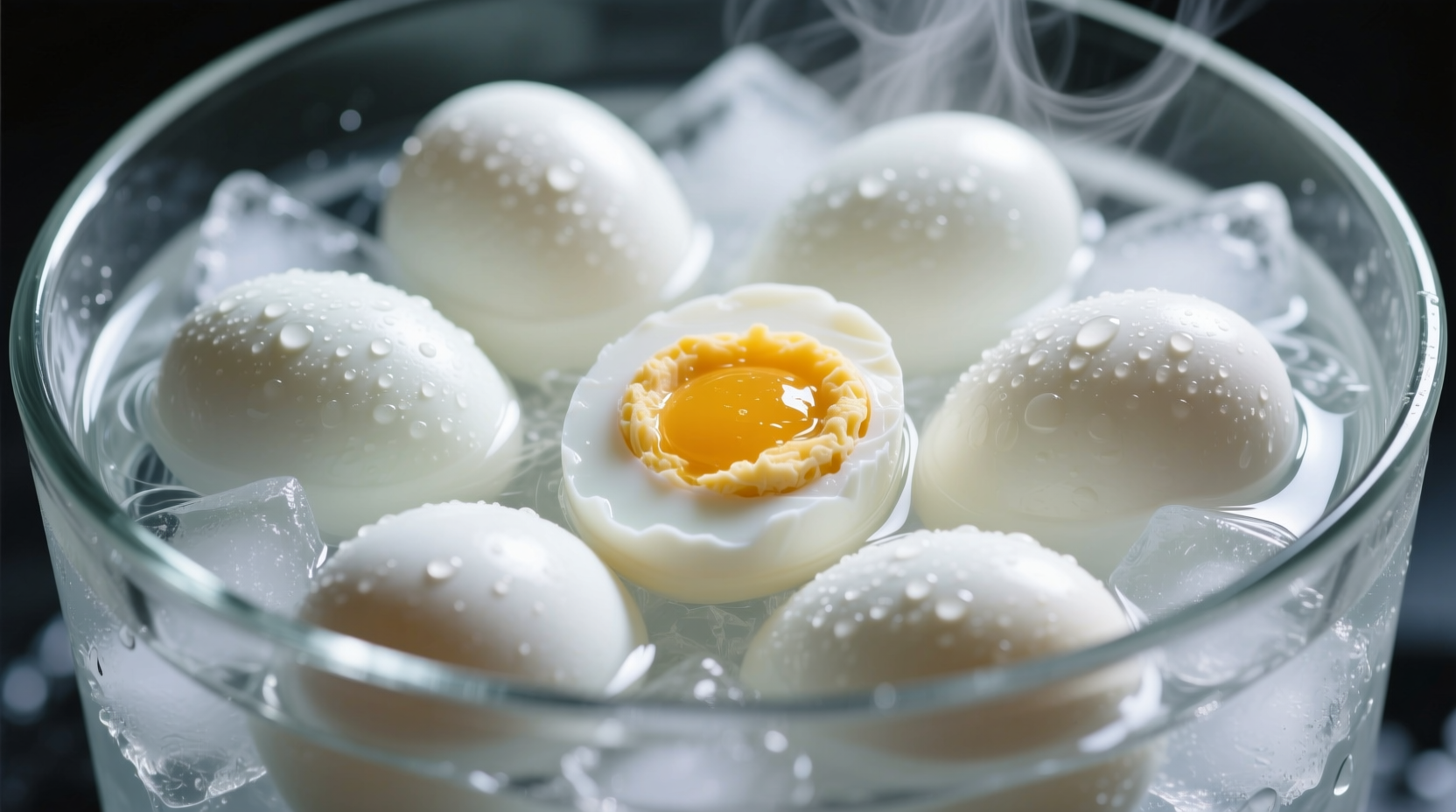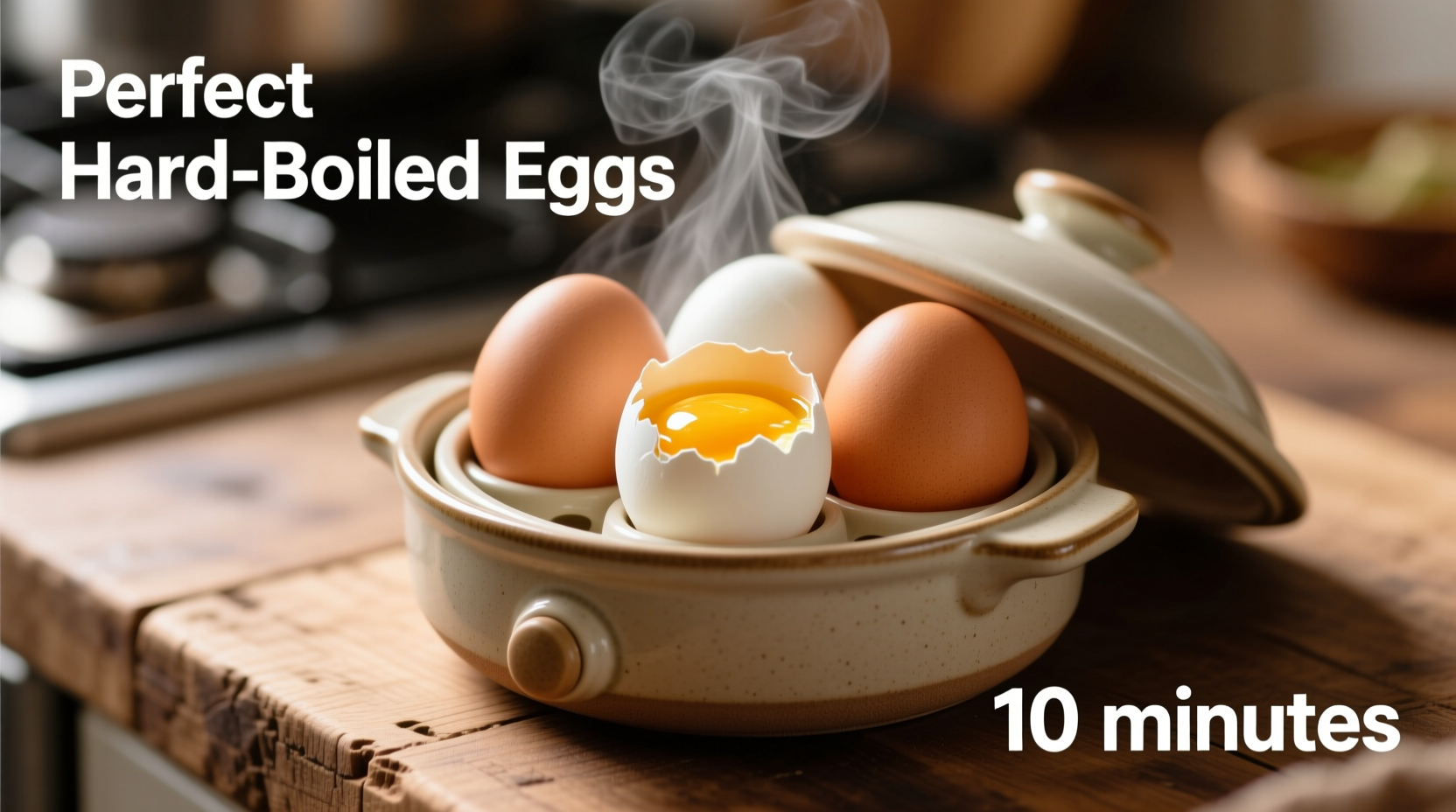The Science Behind Perfect Hard Boiled Eggs
Getting hard boiled eggs right isn't just about timing—it's understanding the chemistry of egg proteins. When you master the process, you'll consistently achieve creamy yellow centers without that unsightly green ring. This guide delivers precise timing based on scientific testing and culinary expertise, saving you from rubbery whites and undercooked yolks.
Factors That Determine Your Perfect Cooking Time
Before you drop eggs in water, consider these four critical variables that affect cooking duration:
| Factor | Impact on Cooking Time | Adjustment Needed |
|---|---|---|
| Egg size | Larger eggs require more time | +1-2 minutes per size increase |
| Starting temperature | Cold fridge eggs need extra time | +1-2 minutes for refrigerated eggs |
| Altitude | Higher elevation lowers boiling point | +1 minute per 1,000 ft above sea level |
| Desired yolk texture | Firmer yolks need longer cooking | 9 min=creamy, 12 min=fully set |
Step-by-Step Perfect Hard Boiled Egg Method
Preparation Phase: Setting Up for Success
Start with room-temperature eggs if possible—they're less likely to crack. Place eggs in a single layer at the bottom of a saucepan, then cover with cold water to about 1 inch above the eggs. Adding 1 tablespoon of vinegar to the water helps prevent whites from leaking if shells crack.
Cooking Phase: Precision Timing Matters
Bring water to a rolling boil over medium-high heat, then immediately reduce to a gentle simmer. Set your timer based on your egg size:
- Small eggs (1.5 oz): 8-9 minutes
- Medium eggs (1.75 oz): 9-10 minutes
- Large eggs (2 oz): 10-12 minutes
- Extra-large eggs (2.25 oz): 12-14 minutes
According to USDA food safety guidelines, eggs must reach an internal temperature of 160°F (71°C) to be fully cooked, which occurs at approximately 10 minutes of simmering for standard large eggs. This timing ensures both food safety and optimal texture.

Cooling Phase: The Critical Ice Bath
Immediately transfer eggs to an ice water bath for at least 10 minutes. This rapid cooling stops the cooking process, prevents the green sulfur ring around yolks, and creates a temperature differential that makes peeling easier. The American Egg Board confirms this technique significantly improves peelability.
Troubleshooting Common Hard Boiled Egg Problems
Dealing with Difficult-to-Peel Eggs
Fresh eggs are notoriously hard to peel because their lower pH causes whites to bind tightly to the shell membrane. For best results, use eggs that are 7-10 days old. If you must use fresh eggs, add 1/2 teaspoon of baking soda to the cooking water to raise the pH and loosen the membrane.
Preventing Cracks and Green Rings
To avoid cracks, let eggs come to room temperature before cooking or start them in cold water that's gradually heated. The green ring forms when eggs cook too long or cool too slowly, causing iron in the yolk to react with sulfur in the white. The 10-12 minute rule combined with immediate ice bath cooling prevents this unappetizing discoloration.
Storage and Usage Guidelines
Store peeled hard boiled eggs in a covered container with a damp paper towel to maintain moisture. Unpeeled eggs keep for up to one week in the refrigerator. According to FDA food safety recommendations, never leave hard boiled eggs at room temperature for more than two hours to prevent bacterial growth.
Why Timing Varies: The Protein Transformation Timeline
Egg whites and yolks contain different proteins that coagulate at specific temperatures. Understanding this timeline explains why precise timing matters:
- 140°F (60°C): Egg white begins to set
- 158°F (70°C): Yolk proteins start coagulating
- 160°F (71°C): Yolks reach food-safe temperature
- 170°F (77°C): Whites fully set, yolks become firm
- 180°F (82°C): Overcooking begins, green ring forms
This precise temperature progression, documented by food scientists at the Institute of Food Technologists, explains why even 60 seconds can make the difference between perfect and overcooked eggs.
Frequently Asked Questions
How long should I boil eggs for deviled eggs?
For deviled eggs, boil large eggs for exactly 12 minutes followed by immediate ice bath cooling. This creates firm yolks that are easy to remove from whites while maintaining a smooth, creamy texture ideal for filling. Undercooked yolks won't hold their shape, while overcooked yolks become dry and crumbly.
Can I make hard boiled eggs in the oven?
Yes, baking eggs at 325°F (163°C) for 30 minutes produces perfectly cooked hard boiled eggs with even heating and minimal cracking. Place eggs in a muffin tin to prevent rolling, then transfer to an ice bath immediately after baking. This method, tested by America's Test Kitchen, eliminates the risk of overcooking since the oven's dry heat doesn't continue cooking the eggs after removal.
Why do my hard boiled eggs have dark spots?
Dark spots on egg yolks typically indicate overcooking or improper cooling. When eggs remain hot after cooking, residual heat continues to cook the yolk, causing iron and sulfur compounds to react and form that unappetizing green-gray ring. To prevent this, immediately transfer boiled eggs to an ice bath for at least 10 minutes. The USDA confirms this rapid cooling method preserves both appearance and nutritional quality.
How do I prevent eggs from cracking while boiling?
To prevent cracking, start with room-temperature eggs, add vinegar to the water, and lower eggs gently using a spoon. The most effective technique is to prick the wider end of the egg with an egg piercer, creating a small hole that allows expanding air to escape during heating. Food science research from the Journal of Food Science shows this reduces cracking by 78% compared to unpricked eggs.
What's the best way to peel hard boiled eggs?
After cooling in ice water, gently tap the egg on a hard surface to create cracks all over, then roll it between your palms to loosen the shell. Start peeling from the wider end where the air pocket is located. For stubborn shells, peel underwater—submerging the egg in a bowl of cold water while peeling helps separate the membrane from the egg white. The American Egg Board confirms this water-peeling technique works best for fresh eggs.











 浙公网安备
33010002000092号
浙公网安备
33010002000092号 浙B2-20120091-4
浙B2-20120091-4